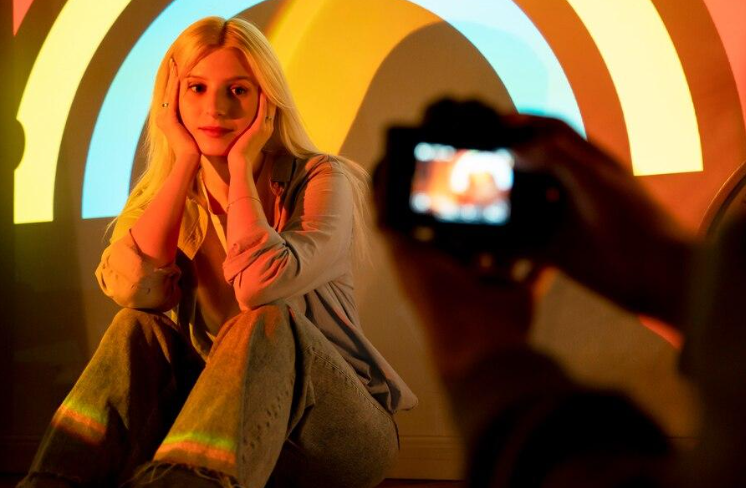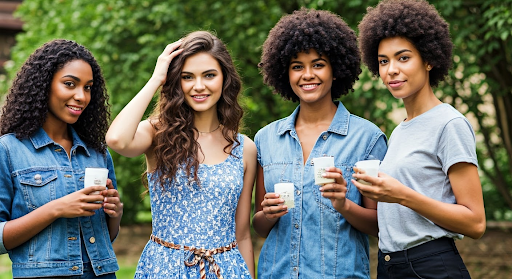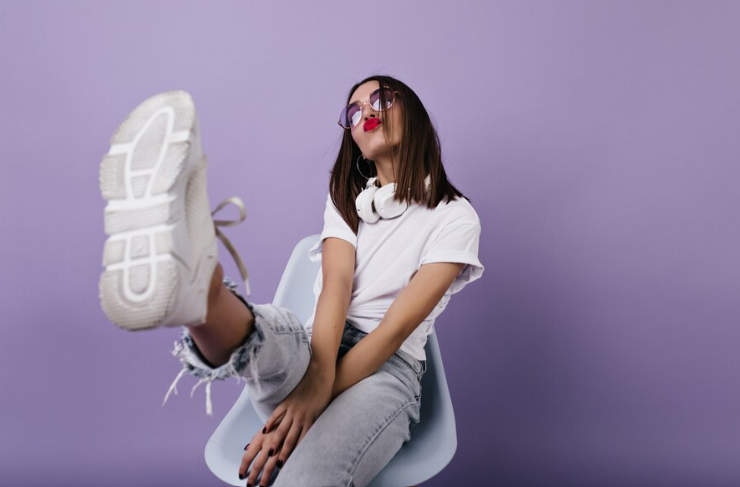Nowadays, Fashion photography is not just about photographing a fashionably dressed model; it transcends beyond that, conveying an overall look and a specific mood.
As a fashion photographer, you’re given the unique privilege of telling compelling stories through your lens, capturing the essence of beauty, style, and trends, and exploring various types of photography. However, if you are thinking about how to shoot fashion photography and whether you’ll be able to master the needed skill or not, there’s no need to stress.
With exclusive tips and techniques, you can discover great ways to transform your fashion portraits into professional-level creations. Moreover, we bring you a comprehensive fashion photography guide to mastering the art of fashion photography – from choosing the right location to understanding color theory and mastering lighting techniques to building a solid portfolio. Let’s dive right in!
What Are the Top 10 Fashion Photography Tips?
Want to enhance your creativity and photography skills? In the following section, you can comprehend 10 such tips that will help you in your photography journey.
1. Find a unique style
Every successful fashion photographer has carved out a distinct style that sets them apart. Your unique style is your signature. It blends your creative vision, personality, and aesthetic sensibilities reflected through your photographs. Developing this personal style involves continuous learning and experimenting.
Draw inspiration from your favorite fashion photographers, but resist the urge to replicate their work. Fashion is subjective, and your unique interpretation is what will set you apart. The goal is not to imitate but to create images that are inherently yours, infused with your perspective, style, and voice
2. Choosing the Right Location
Choosing the right location is as crucial as selecting the perfect dress or the right model. The location sets the tone for your shoot, reinforcing the narrative you want to convey through your photography. However, this location can be either outdoors or indoors, depending on the project’s requirements.
Outdoor Locations
Outdoor locations provide a rich and varied canvas for fashion photography. However, you need to follow the below tips when considering outdoor locations:
- Time of Day: The best times to shoot outdoors are during the golden hours – dawn and twilight. The soft, warm light can add a magical touch to your images.
- Weather Conditions: Keep an eye on the weather forecast. Cloudy days offer a natural diffused light perfect for shooting fashion photography.
- Location Scouting: Do a thorough recce of your chosen exotic location before the shoot day for your fashion magazine. Pay attention to the background and possible distractions.
- Legal Permissions: Ensure you have the required permissions, if necessary, to avoid any interruptions during the shoot.
Indoor Studio Spaces
Indoor Studio provides a controlled environment for your fashion shoots. Here are some points to consider while shooting in a studio:
- Lighting: Studios allow you to experiment with varied lighting setups. Understand the interplay of shadows and light to create stunning images.
- Backdrops: Use different colored backdrops or create textured backgrounds for diversity in your shots.
- Props: Studio shoots provide more flexibility to use props that complement the theme of your shoot.
- Controlled Environment: With a stable environment and zero weather interruptions, studios give you the control to bring your vivid imagination to life.
3. Effective Collaboration with Models and Stylists
The success of a fashion photo shoot hinges on solid collaboration between the photographer, models, and stylists. Clear communication is essential; photographers should express their ideas while remaining open to input from the team. Besides, when working with models, it’s crucial to treat them respectfully and ensure they feel comfortable capturing their true essence.
Furthermore, collaboration with makeup artists and wardrobe stylists enhances the aesthetic appeal of a model photoshoot. Sharing a mood board and discussing a good idea helps create a unified vision. Respecting each professional’s craft and maintaining open communication leads to a harmonious environment that elevates the final images.
4. Mastering the Art of Lighting
Lighting is the lifeline of any great photograph, particularly in fashion photography, and it can make or break an image quality. We will discuss mastering natural light techniques and studio lighting tips here.
Natural Light Techniques
Harnessing the power of natural light in fashion photography can create stunning results. However, mastering lighting skills requires understanding the nuances of sunlight and how to use it to your advantage. Here are some tips:
- Golden Hour: Use the soft, dramatic light during sunrise and sunset to create remarkable portrait photography.
- Diffuse Light: On cloudy days or in shaded areas, take advantage of the evenly distributed, diffused light.
- Backlighting: Experiment with backlighting for silhouette effects or to create a halo-like rim light around your model.
- Reflectors: Employ reflectors to bounce light and illuminate the shadowy areas.
Studio Lighting Tips
Being well-versed with studio lighting techniques is essential for indoor fashion photography. Here’s some advice on how to manage studio lighting effectively:
- Three-Point Lighting: Use key light, fill light, and backlight to create dimension and depth.
- Softboxes: Softboxes soften light, reduce hotspots and shadows, and can give your images a more natural look.
- Reflectors and Diffusers: Use these to manage lighting intensity and direction, improving your shots’ brightness and contrast.
- Experimentation: Don’t be afraid to play with angles, shadows, and arrangement of lights. Experimentation can lead you to discover your unique lighting style.
5. Shooting from Various Perspectives
Every shot in fashion photography tells a story, and the way you compose that shot can change how your story is interpreted. Your choice of angle and composition can transform an ordinary photo into an extraordinary one, with the outfit being the star of the show, taking your fashion photography to the next level.
Therefore, trying different perspectives can add layers of depth and context to your fashion photographs. Here’s a quick guide to shooting from various angles:
| Angle and Perspective | Resultant Impact |
| Eye-Level Shots: | Creates a connection with the viewer, as it’s the most natural perspective we are used to seeing people. |
| High-Angle Shots: | Makes the model appear smaller or vulnerable. It can also be used to highlight the environment around the model. |
| Low-Angle Shots: | Gives a powerful and dominating impression of the model. |
| Close-Up Shots: | Great for emphasizing details, expressions, and makeup. |
| Full-Length Shots: | Ideal for showcasing the entire outfit in fashion shoots. |
6. Creating Visual Interest in Your Images
Creating visual interest is what makes your photograph stand out. It’s about how well you play with elements like color, light, composition, and texture to captivate your viewers. Using techniques like leading lines can guide the viewer’s eyes to the main subject.
Compositional tools like the rule of thirds can enhance the balance and aesthetics of your shot. You may also experiment with reflections and silhouettes for a unique touch. Overall, by focusing on creating strong visual interest, you can transform your fashion shots from simply appealing to genuinely captivating.
7. Making Use of Props and Set Design
Props and set design are powerful tools that can add layers of visual interest to fashion photography. A well-chosen prop can highlight the subject’s persona and add depth to a shot while ensuring that the selling point of the product is clearly visible. Similarly, thoughtful set design helps to create a consistent aesthetic that reinforces your storyline.
Additionally, props should align with the theme, be appropriately sized, and color-coordinated with the model’s outfit, adding a dynamic element without overwhelming the shot. For backdrops, you may opt for simple designs or a neutral backdrop to keep the main focus on the subject, coordinate colors with the theme, and use patterns judiciously to avoid distraction.
8. Understanding Color Theory in Fashion Photography
In fashion photography, understanding color theory is essential for enhancing the visual appeal of your images. Colors can evoke emotions, tell stories, and create an atmosphere. Using complementary colors can create striking contrasts, while a monochromatic scheme offers a more subtle look.
Although mastering color theory requires extra effort, it allows photographers to build visual harmony and emphasize key composition elements. Colors also play a significant role in shaping moods. Warm colors like red and orange convey energy, while cool colors like blue and green evoke calmness. Bold colors can attract attention and add drama, whereas pastels create a soft, romantic feel.
9. Post-Processing in Fashion Photography
Post-processing is essential for elevating fashion photographs from good to great. It involves retouching imperfections and working on image editing adjustments like exposure and color balance using tools like Adobe Lightroom and Photoshop. Note that the goal is to enhance the image while keeping a natural look, ensuring the model’s beauty shines through without over-editing.
Effective retouching emphasizes subtlety, correcting blemishes while preserving the model’s features and skin texture. By adjusting lighting and contrast, photographers can maintain a cohesive aesthetic. The ideal retouched photo appears naturally beautiful, showcasing both the model and the artistry of the photograph.
10. Build a Strong Portfolio, and Don’t underestimate the Power of Networking
To thrive in fashion photography, focus on your creative and business skills and fashion product photography. Build a strong portfolio that showcases your unique style and versatility with various fashion photo shots, including full-length and close-ups. Networking is crucial; connect with industry professionals at events and enhance your online presence on social media channels.
Next, a professional website featuring your work and client testimonials can further establish your fashion brands. Remember, a well-rounded portfolio is your ticket to success. Regularly update it to reflect your abilities and creative process, helping you stand out in a competitive market.
Transform Your Fashion Photography with FlixStudio
FlixStudio is your go-to destination for captivating visual storytelling that takes your fashion photography to new heights. We specialize in crafting high-quality, engaging, and quick images tailored to meet your unique needs. If you’re looking to elevate your e-commerce shop with eye-catching fashion images, look no further, as we are here to help you make a lasting impression in the world of fashion photography!
Conclusion
A career choice in fashion photography is an exciting endeavor filled with opportunities for creativity and growth. Focus on developing your unique style, creating visually appealing shoots, mastering lighting, and fostering collaboration. Understanding the business side is essential to navigate your career effectively.
While technical skills matter, your creativity and individuality will truly set you apart. Embrace experimentation, follow your artistic vision, and enjoy the journey. The world of fashion photography is vibrant and constantly changing—dive in and make your unique mark!
Frequently Asked Questions
How to Get Started in Fashion Photography?
Getting started in fashion photography involves honing your photography skills, developing an eye for style and beauty, and understanding the basics of fashion. The best way to start is by practicing with friends or family, experimenting with different styles and techniques, and gradually building a portfolio showcasing your best work.
How Can I Develop My Own Style as a Fashion Photographer?
To develop your own style as a fashion photographer, experiment extensively with different fashion photography techniques and themes. Let your intuitions guide your creativity, and over time, you will begin to notice common elements that align with your artistic sensibilities. That’s your evolving style coming into focus.
Can I Succeed in Fashion Photography without Formal Training?
Indeed, formal training can provide beneficial structure and technical knowledge, but it’s not a prerequisite for success in fashion photography. It’s possible to self-learn through online tutorials, books, or workshops and still carve out a successful career. Passion, practice, and persistence are the real keys to success.
What Equipment Do I Need for Fashion Photography?
While high-end equipment can enhance your output, you can start simply with the right camera and lens. As you progress, you can invest in additional lenses for versatility, lighting equipment for indoor shoots, and editing software for post-processing. Remember, creativity triumphs over equipment.
What Are the Four Types of Fashion Photography?
Typically, fashion photography is divided into four main types – Editorial, High Fashion, Catalog, and Street Style Photography. Each type has its distinct characteristics, style, audience, and purpose. As a fashion photographer, you could choose to specialize in one type or experiment with all.



